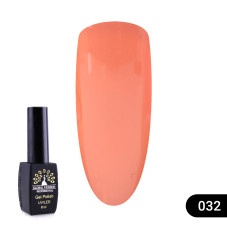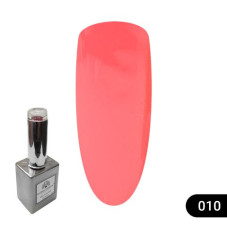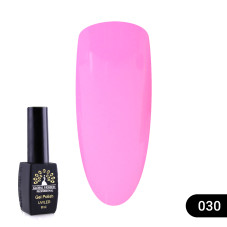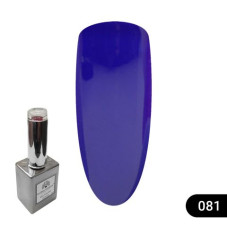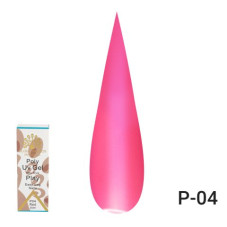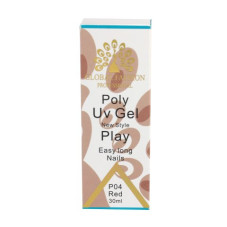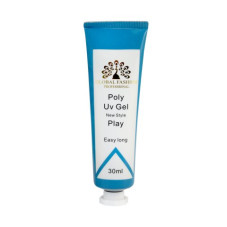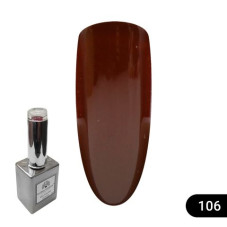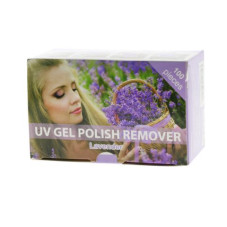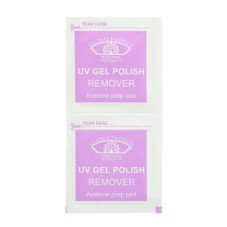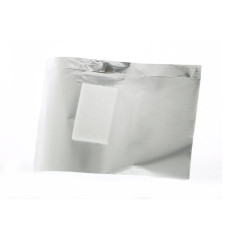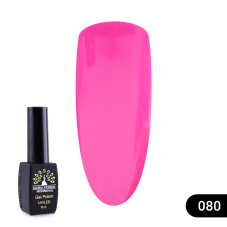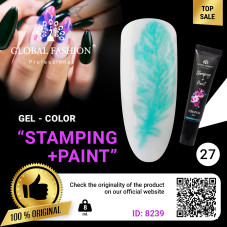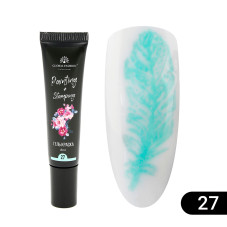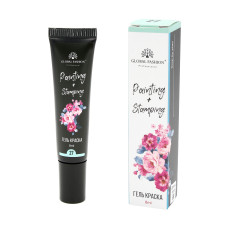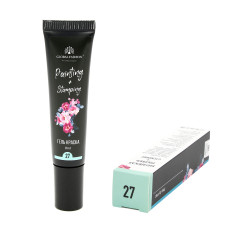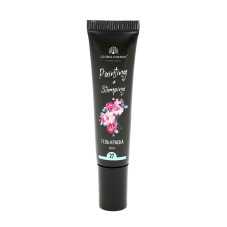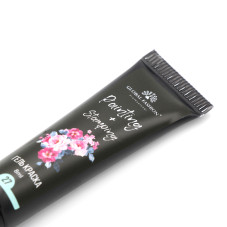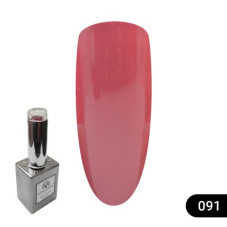Manicure router. Manicure art helper

We live in a time when everything is changing, nothing stands still and a couple of people can't even keep up with the new trends. While a couple of years ago, to boast of a good manicure, it was necessary to spend a huge amount of time on it and in its performance master used scissors, clippers and scissors, now these accessories have been left behind and the time to create a manicure has become much shorter. Today, hardware manicure is in high demand, due to the fact that it is fast and to create it master uses a number of modern power tools, one of which is a manicure cutter, through which both the master and the customer will save their precious time.
And so, what is a cutter?
Millinger for manicure - is an electric tool with which you can do: correcting retouched nails, cuticle removing, polishing, buffing nail plate, smoothing the artificial and natural nail plate and remove gel-lacquer. The milling machine is also popularly used for pedicures. Thanks to the milling machine, you can not only make a beautiful pedicure, but also get rid of corns and corns. View the router
Now let's talk about the criteria and features in choosing a manicure router.
Main types of manicure and pedicure milling machines
Manicure and pedicure mills are divided into two main types based on their application:
The manicure milling machine for home manicures. Functional, ergonomic and compact.
The Professional nail router. Features relatively larger dimensions and better performance.
Manicure cutters are known to be in high demand, but, for all that, they have both advantages and disadvantages.
Advantages and disadvantages of using a manicure and pedicure cutter
Advantages:
- Using a router is more convenient and quicker to even out the length and shape of your extensions than with a file.
- Using an electric cutter it is possible to cut the most inaccessible areas that cannot be reached with a file.
- It is very convenient to cut the thickness and length of the nails during the correction, as it is very fast and shortens the time needed for the whole process.
- When doing white french extensions, it is convenient to use the router to saw out the shape of the smile line.
- Easy enough to work with, even for novice nail technicians.
- Takes up little space.
- Its budget price is affordable.
- Minimum quantity of the most necessary cutters (also for pedicure procedure).
Disadvantages:
- Poor assembly.
- Low quality of cutters (nozzles can be made of soft metal, therefore no tool life, and deforms quickly).
- Low power.
- Handle vibrates.
- Short cord.
- High probability of breakage.
Advantages and disadvantages of using a professional manicure and pedicure cutter
Advantages:
- Intelligent design: there is a special foot pedal for changing the speed of the cutter.
- The presence of overheat indicators, which preliminarily disconnect the device from the power supply in case of temperature increase.
- This model is able to perform complex treatments in manicure and pedicure (podiatry).
- High performance.
- No vibration.
- Availability of accessories.
- Long service life and robust build-up.
- Universality. By using cutters of different abrasion, you can work with both natural and artificial nails.
- High power output.
The disadvantages:
- High weight of the machine.
- Bulky (cannot be transported).
- High cost of the models.
Rotation speed and power of a manicure cutter
There are manicure cutters:
- With a power output of 15 to 30 watts and speeds of up to 20,000 revolutions per minute.
- with a power output of 30 to 60 watts and speeds of up to 35,000 rpm.
- with an output of 60 to 100 watts and a speed of up to 45,000 rpm.
If the cutter speed is too high, it can warp, vibration can interfere with your work, and there is the possibility of the electric motor overheating. But more importantly, the work becomes dangerous and the customer can be injured. But there is one rule - the bigger the radius of the cutter, the lower the rotational speed should be. When performing manicure, working with small nozzles with diamond tips the optimal speed is 18000 - 30000 rpm. Bear in mind that extreme care must be taken when working at high speeds (from 20,000 rpm), as any ill-considered action or an accidental awkward movement can unexpectedly lead to serious injury. Most work is carried out at speeds of 10000-20000 rpm. All of the above also applies to pedicures. However, special grinding caps are used for this operation, designed for one-off use, whose size varies with the radius of the cutter and the type of machine. The basic rule is the same - the bigger the size of the cap, the lower the speed should be.
Different procedures require different maximum powers. For example, we are removing an artificial nail by sawing off its thickness. And we have an infinitely higher power cutter. The harder we press the nozzle against the nail, the faster it will cut the nail. However, this work produces heat, which heats the nail. The faster we cut the nail, the more it heats up. At first it is uncomfortable for the client and then it hurts. So the power that is needed for the procedure, when the client does not feel comfortable, but it does not hurt and is called the maximum power for this procedure.
If the cutter is weaker, we will not be able to serve the client as quickly because at the same pressure of the tip on the nail, the cutter handle will stop - the cutter has insufficient power. If the cutter is more powerful than you need for your heaviest treatment, the excess power will remain a surplus: it won't be used anywhere, after all, we won't be hurting the client. So it's worth thinking about what kind of work you're buying the router for, so you don't have to buy "unnecessary watts".
Maximum power for popular treatments:
- gel nail polish removal - 40 watts.- manicure - 40 watts.
- artificial nail extensions and correction - 65 Watt.
- pedicure - from 65 to 100 watts.
Maximum turns for popular procedures:
- gel nail polish removal - up to 35.000 rpm.
- manicure - 25.000 rpm.
- artificial nail extensions and touch ups - up to 35.000 rpm
- pedicure - up to 45.000 rpm.
Manicure router bits for manicures
A beautifully and well-made manicure not only depends on the cutter itself, but also on the cutter bits. There are many different cutters about which we are now going to talk in detail. And so, let's break it down.
Diamond cutters. They are considered to be one of the best milling cutters for manicure. After all, they can make the correction of artificial nails, treat acrylics, peel off excess pterygium and effectively make a manicure. Diamond nozzles are divided into two types: the tips of the artificial diamond and natural. The main difference is that artificial diamond crumbles and dulls in the process. Natural diamond, on the other hand, is much sharper and virtually indestructible. View diamond cutters
Ceramic cutters. Suitable for both domestic and salon use. These cutters for a hardware manicure are softer than the diamond tips and are most often used for manicures with hard nails and coarsened cuticles. They are excellent for removing gel nail polish, gel, acrylics and polygel. These cutters are ideal for buffing the nail and scraping the cuticle. They won't damage the nail even if this is the first time a client has had a manicure using a machine. View ceramic cutters
Corundum bits for router bits. These bits are great for natural nails and for polishing the skin. They are easy to work with and their efficiency is really impressive. Due to their gentle action, the corundum stone cutters are used in the secondary treatment stages of natural nails and foot skin. View corundum bits
Carbide inserts. In case of false nails, it is used for rough filing, filing under the nails, correction of nail shape and length. The main difference of the carbide tips is that they cut the material, producing shavings and not dust. Excellent for rough pre-treatment of hard materials. Excellent for filing artificial nails. The lifespan and efficiency of carbide tips is high and they do not rust, can withstand disinfection and sterilisation well. View carbide inserts
Felt tips for router bits. They are used for polishing nails. After their application, the nails have a smooth surface.
For a correct choice of cutters for manicure, first of all, you should pay attention to their abrasiveness, the degree of which can be determined by the colour of the notch on the cutter head:
White - a fine spiral cut.
Yellow - super fine-cut.
Red - fine serrations.
Blue - medium slicing.
Green - coarse slicing.
Black - extra coarse slicing.
Varieties of cutters
When choosing manicure cutters, you need to be aware of their main shape variations.
Cone - necessary for sanding and polishing of lateral rollers.
Reverse cone - serves to remove calluses and work with the free edge of the nail plate (which makes it in demand not only during manicure, but also pedicure).
Boron - it can be used to push back the cuticle and remove the pterygium from the nail surface.
Needle and ball - good for working on small imperfections, such as trimming side grooves. (For more information on cutters, see our article).
How to choose the right router?
1. The number of revolutions per minute. An experienced craftsman needs a device with at least 30,000 - 35,000 rpm. A beginner nail technician needs at least 20,000 rpm for simple side roller and cuticle treatment. A technician without experience does not need high speeds because there is a risk of accidental injury. But it is essential for a big flow of clients when gel, biogel and gel lacquers need to be removed quickly.
2. Cost. You need to pay attention to the cost of the router. A good quality nail trimmer should not be too cheap as cheap nail trimmers often break quickly and cannot be repaired. A good quality and complete router should be priced in the middle range.
3. Cutter handle. It should be made of metal, not plastic and have a collet clamp. Its weight should not be too heavy or too light. In choosing a router, the handle plays the most important role, so when buying a router, it is best to turn the handle on and hold it in your hand.
4. Power. The router must have a good enough power. The maximum speed of the router should be at least 30000 rpm.
5. Warranty. The milling machine must have a warranty.
6. Appearance. The body of the router must be robust. It should not squeak during operation and should not heat up.
7. Additional features. "Try the device on in your hand. Will you be able to manoeuvre it comfortably in your hand, operate it with ease and is it too heavy for your hand?
You must also pay attention to small but important points: if the handle shakes and vibrates, the machine will be uncomfortable to hold with your hand, and if there is no special venting, the handle will overheat and stop functioning. Another critical point is the presence of reversing - the instantaneous reversal of the cutter's direction of rotation. The right direction of the machine is determined by the average degree of resistance when applied to the nail plate. Remember that you can only switch over the reverse once you have reset the RPM intensity. Also, an equally important feature of the router is the torque of the handle. It is important not to insert a weak knob into a powerful router unit, as this will then overload the router and cause it to fail quickly. When the knob is nearing its end, you'll know it's going to get very hot and sooner or later it will just burn out. But here is where it gets tricky - it turns out that lightweight pens may not get hot at all, as they are often made of plastic. Except that the plastic hardly ever warms up as a result of the wear and tear on the handle, and yet it continues to break. We recommend heavy metal handles, which not only handle vibration well during operation, but are also guaranteed to point you towards possible wear and tear on the appliance. It is important to remember that the router handle must never vibrate, even at maximum speed.
Maintenance principles for manicure and pedicure drills
It is known that any technique to be able to serve its master a maximum amount of time, it must be properly cared for. At, what should be paid attention to when caring for the miller.
- Regularly inspect the hoses and wires connecting the control box to the cutter handle and to the power supply for damage and if any are present, do not continue working but call the service centre to have them repaired.
- Wipe dust off the control unit as necessary and make sure that no objects rest on it.
- Also regularly remove dirt from the router handle and all wires and hoses.
If your pedicure cutter is fitted with an integrated hoover, regularly replace the dust bag and clean the dust canister: this will prevent unpleasant odours from entering your office and improve the performance of the hoover.
- In the case of a spray-on pedicure milling machine, remember to rinse the saline solution tank regularly and keep the safety valve on its cover clean, otherwise the tank may not hold too much pressure and the escaping saline solution will damage the control unit.
All these procedures must only be carried out with the control unit disconnected from the power supply and the plug removed from the socket. When wiping the surfaces, never use alcohol, solvents or other aggressive liquids. Use a cloth moistened in a soapy solution and well wrung out.
Well, we've done our job - we've dot all the i's and crossed all the t's. Now it's your turn to put your knowledge into practice. Now we are sure that you will find it easier to choose a quality milling machine for manicure and enjoy working with it. Which is what we wish you!
Read also:
1. How to choose a manicure lamp? Let's understand the nuances!
2. Manicure extractor. Master and client safety
3. Manicure kit steriliser - looking after your customer's health
4. Lamps for lighting in the nail industry. Which lamp to choose?
And so, what is a cutter?
Millinger for manicure - is an electric tool with which you can do: correcting retouched nails, cuticle removing, polishing, buffing nail plate, smoothing the artificial and natural nail plate and remove gel-lacquer. The milling machine is also popularly used for pedicures. Thanks to the milling machine, you can not only make a beautiful pedicure, but also get rid of corns and corns. View the router
Now let's talk about the criteria and features in choosing a manicure router.
Main types of manicure and pedicure milling machines
Manicure and pedicure mills are divided into two main types based on their application:
The manicure milling machine for home manicures. Functional, ergonomic and compact.
The Professional nail router. Features relatively larger dimensions and better performance.
Manicure cutters are known to be in high demand, but, for all that, they have both advantages and disadvantages.
Advantages and disadvantages of using a manicure and pedicure cutter
Advantages:
- Using a router is more convenient and quicker to even out the length and shape of your extensions than with a file.
- Using an electric cutter it is possible to cut the most inaccessible areas that cannot be reached with a file.
- It is very convenient to cut the thickness and length of the nails during the correction, as it is very fast and shortens the time needed for the whole process.
- When doing white french extensions, it is convenient to use the router to saw out the shape of the smile line.
- Easy enough to work with, even for novice nail technicians.
- Takes up little space.
- Its budget price is affordable.
- Minimum quantity of the most necessary cutters (also for pedicure procedure).
Disadvantages:
- Poor assembly.
- Low quality of cutters (nozzles can be made of soft metal, therefore no tool life, and deforms quickly).
- Low power.
- Handle vibrates.
- Short cord.
- High probability of breakage.
Advantages and disadvantages of using a professional manicure and pedicure cutter
Advantages:
- Intelligent design: there is a special foot pedal for changing the speed of the cutter.
- The presence of overheat indicators, which preliminarily disconnect the device from the power supply in case of temperature increase.
- This model is able to perform complex treatments in manicure and pedicure (podiatry).
- High performance.
- No vibration.
- Availability of accessories.
- Long service life and robust build-up.
- Universality. By using cutters of different abrasion, you can work with both natural and artificial nails.
- High power output.
The disadvantages:
- High weight of the machine.
- Bulky (cannot be transported).
- High cost of the models.
Rotation speed and power of a manicure cutter
There are manicure cutters:
- With a power output of 15 to 30 watts and speeds of up to 20,000 revolutions per minute.
- with a power output of 30 to 60 watts and speeds of up to 35,000 rpm.
- with an output of 60 to 100 watts and a speed of up to 45,000 rpm.
If the cutter speed is too high, it can warp, vibration can interfere with your work, and there is the possibility of the electric motor overheating. But more importantly, the work becomes dangerous and the customer can be injured. But there is one rule - the bigger the radius of the cutter, the lower the rotational speed should be. When performing manicure, working with small nozzles with diamond tips the optimal speed is 18000 - 30000 rpm. Bear in mind that extreme care must be taken when working at high speeds (from 20,000 rpm), as any ill-considered action or an accidental awkward movement can unexpectedly lead to serious injury. Most work is carried out at speeds of 10000-20000 rpm. All of the above also applies to pedicures. However, special grinding caps are used for this operation, designed for one-off use, whose size varies with the radius of the cutter and the type of machine. The basic rule is the same - the bigger the size of the cap, the lower the speed should be.
Different procedures require different maximum powers. For example, we are removing an artificial nail by sawing off its thickness. And we have an infinitely higher power cutter. The harder we press the nozzle against the nail, the faster it will cut the nail. However, this work produces heat, which heats the nail. The faster we cut the nail, the more it heats up. At first it is uncomfortable for the client and then it hurts. So the power that is needed for the procedure, when the client does not feel comfortable, but it does not hurt and is called the maximum power for this procedure.
If the cutter is weaker, we will not be able to serve the client as quickly because at the same pressure of the tip on the nail, the cutter handle will stop - the cutter has insufficient power. If the cutter is more powerful than you need for your heaviest treatment, the excess power will remain a surplus: it won't be used anywhere, after all, we won't be hurting the client. So it's worth thinking about what kind of work you're buying the router for, so you don't have to buy "unnecessary watts".
Maximum power for popular treatments:
- gel nail polish removal - 40 watts.- manicure - 40 watts.
- artificial nail extensions and correction - 65 Watt.
- pedicure - from 65 to 100 watts.
Maximum turns for popular procedures:
- gel nail polish removal - up to 35.000 rpm.
- manicure - 25.000 rpm.
- artificial nail extensions and touch ups - up to 35.000 rpm
- pedicure - up to 45.000 rpm.
Manicure router bits for manicures
A beautifully and well-made manicure not only depends on the cutter itself, but also on the cutter bits. There are many different cutters about which we are now going to talk in detail. And so, let's break it down.
Diamond cutters. They are considered to be one of the best milling cutters for manicure. After all, they can make the correction of artificial nails, treat acrylics, peel off excess pterygium and effectively make a manicure. Diamond nozzles are divided into two types: the tips of the artificial diamond and natural. The main difference is that artificial diamond crumbles and dulls in the process. Natural diamond, on the other hand, is much sharper and virtually indestructible. View diamond cutters
Ceramic cutters. Suitable for both domestic and salon use. These cutters for a hardware manicure are softer than the diamond tips and are most often used for manicures with hard nails and coarsened cuticles. They are excellent for removing gel nail polish, gel, acrylics and polygel. These cutters are ideal for buffing the nail and scraping the cuticle. They won't damage the nail even if this is the first time a client has had a manicure using a machine. View ceramic cutters
Corundum bits for router bits. These bits are great for natural nails and for polishing the skin. They are easy to work with and their efficiency is really impressive. Due to their gentle action, the corundum stone cutters are used in the secondary treatment stages of natural nails and foot skin. View corundum bits
Carbide inserts. In case of false nails, it is used for rough filing, filing under the nails, correction of nail shape and length. The main difference of the carbide tips is that they cut the material, producing shavings and not dust. Excellent for rough pre-treatment of hard materials. Excellent for filing artificial nails. The lifespan and efficiency of carbide tips is high and they do not rust, can withstand disinfection and sterilisation well. View carbide inserts
Felt tips for router bits. They are used for polishing nails. After their application, the nails have a smooth surface.
For a correct choice of cutters for manicure, first of all, you should pay attention to their abrasiveness, the degree of which can be determined by the colour of the notch on the cutter head:
White - a fine spiral cut.
Yellow - super fine-cut.
Red - fine serrations.
Blue - medium slicing.
Green - coarse slicing.
Black - extra coarse slicing.
Varieties of cutters
When choosing manicure cutters, you need to be aware of their main shape variations.
Cone - necessary for sanding and polishing of lateral rollers.
Reverse cone - serves to remove calluses and work with the free edge of the nail plate (which makes it in demand not only during manicure, but also pedicure).
Boron - it can be used to push back the cuticle and remove the pterygium from the nail surface.
Needle and ball - good for working on small imperfections, such as trimming side grooves. (For more information on cutters, see our article).
How to choose the right router?
1. The number of revolutions per minute. An experienced craftsman needs a device with at least 30,000 - 35,000 rpm. A beginner nail technician needs at least 20,000 rpm for simple side roller and cuticle treatment. A technician without experience does not need high speeds because there is a risk of accidental injury. But it is essential for a big flow of clients when gel, biogel and gel lacquers need to be removed quickly.
2. Cost. You need to pay attention to the cost of the router. A good quality nail trimmer should not be too cheap as cheap nail trimmers often break quickly and cannot be repaired. A good quality and complete router should be priced in the middle range.
3. Cutter handle. It should be made of metal, not plastic and have a collet clamp. Its weight should not be too heavy or too light. In choosing a router, the handle plays the most important role, so when buying a router, it is best to turn the handle on and hold it in your hand.
4. Power. The router must have a good enough power. The maximum speed of the router should be at least 30000 rpm.
5. Warranty. The milling machine must have a warranty.
6. Appearance. The body of the router must be robust. It should not squeak during operation and should not heat up.
7. Additional features. "Try the device on in your hand. Will you be able to manoeuvre it comfortably in your hand, operate it with ease and is it too heavy for your hand?
You must also pay attention to small but important points: if the handle shakes and vibrates, the machine will be uncomfortable to hold with your hand, and if there is no special venting, the handle will overheat and stop functioning. Another critical point is the presence of reversing - the instantaneous reversal of the cutter's direction of rotation. The right direction of the machine is determined by the average degree of resistance when applied to the nail plate. Remember that you can only switch over the reverse once you have reset the RPM intensity. Also, an equally important feature of the router is the torque of the handle. It is important not to insert a weak knob into a powerful router unit, as this will then overload the router and cause it to fail quickly. When the knob is nearing its end, you'll know it's going to get very hot and sooner or later it will just burn out. But here is where it gets tricky - it turns out that lightweight pens may not get hot at all, as they are often made of plastic. Except that the plastic hardly ever warms up as a result of the wear and tear on the handle, and yet it continues to break. We recommend heavy metal handles, which not only handle vibration well during operation, but are also guaranteed to point you towards possible wear and tear on the appliance. It is important to remember that the router handle must never vibrate, even at maximum speed.
Maintenance principles for manicure and pedicure drills
It is known that any technique to be able to serve its master a maximum amount of time, it must be properly cared for. At, what should be paid attention to when caring for the miller.
- Regularly inspect the hoses and wires connecting the control box to the cutter handle and to the power supply for damage and if any are present, do not continue working but call the service centre to have them repaired.
- Wipe dust off the control unit as necessary and make sure that no objects rest on it.
- Also regularly remove dirt from the router handle and all wires and hoses.
If your pedicure cutter is fitted with an integrated hoover, regularly replace the dust bag and clean the dust canister: this will prevent unpleasant odours from entering your office and improve the performance of the hoover.
- In the case of a spray-on pedicure milling machine, remember to rinse the saline solution tank regularly and keep the safety valve on its cover clean, otherwise the tank may not hold too much pressure and the escaping saline solution will damage the control unit.
All these procedures must only be carried out with the control unit disconnected from the power supply and the plug removed from the socket. When wiping the surfaces, never use alcohol, solvents or other aggressive liquids. Use a cloth moistened in a soapy solution and well wrung out.
Well, we've done our job - we've dot all the i's and crossed all the t's. Now it's your turn to put your knowledge into practice. Now we are sure that you will find it easier to choose a quality milling machine for manicure and enjoy working with it. Which is what we wish you!
Read also:
1. How to choose a manicure lamp? Let's understand the nuances!
2. Manicure extractor. Master and client safety
3. Manicure kit steriliser - looking after your customer's health
4. Lamps for lighting in the nail industry. Which lamp to choose?
Published: 25.03.2022 11:34
Times Read: 3971
